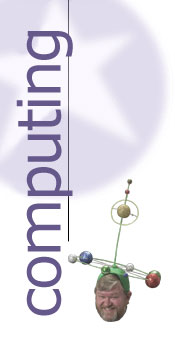IBM and Microsoft Set Future DOS And OS/2 Directions
by Lloyd Borrett
Technical Cornucopia, February 1990
At COMDEX in Las Vegas in November 1989,
IBM and Microsoft broadened the scope of their development
partnership and agreed to develop jointly a consistent, full
range of systems software offerings for the 1990s. These
software offerings will include enhancements to DOS, OS/2
and Local Area Network products.
Platform for the '90s
Together, IBM and Microsoft described the "platform
for the '90s" as hardware systems with Intel 386 or i486
microprocessors, 4 MBytes of memory and 60 Mbyte fixed disk
drives with OS/2 and the Presentation Manager graphical user
interface.
To reaffirm this, IBM and Microsoft indicated the
majority of their application and systems development
resources will be applied to OS/2 solutions. Beginning in
the second half of 1990, IBM and Microsoft plan to make
their graphical applications available first on OS/2.
Specifically, the companies jointly announced:
- Their intent to deliver a version of OS/2
that exploits the advanced capabilities of the Intel 386 and
i486 in 1990. This version will have advanced features such
as demand paging and the ability to run multiple DOS
applications concurrently. It also will allow applications
to exploit the 32-bit flat memory model. Today's emerging
Presentation Manager applications will run unmodified on the
new version of OS/2.
- Availability of early development support
for this new OS/2 version by year-end 1989 with a common
development toolkit. Software developers starting new high
performance or server applications targeted towards 386SX
based systems with 4 MBytes or larger systems should build
directly on the advanced APIs of this forthcoming 32-bit
version of OS/2.
IBM and Microsoft suggested that the current OS/2 1.2 is
recommended for systems with at least 3 MBytes of memory and
30 MByte fixed disk drives.
IBM and Microsoft committed to continue to expand the
range of OS/2 capable systems. As a first step, the
companies announced that the over 512 KBytes of memory used
by the OS/2 "DOS Compatibility Box" also will be
usable by OS/2 applications when the DOS program is
inactive. This capability will be available this year.
Both IBM and Microsoft are making a concerted effort to
enable OS/2 for 2 MByte entry systems. It was suggested that
users should plan to use Microsoft Windows to implement
graphical applications on platforms with less than 2 MByte
of memory.
On systems with 4 MBytes of memory, IBM and Microsoft
suggested users can take full advantage of advanced system
features such as the new High Performance File System,
expanded LAN client features and advanced applications. OS/2
is currently best suited for users running or building
database applications, needing full multi-application and
background processing support or using distributed
processing solutions requiring full LAN client support.
OS/2 is also recommended for all server applications. The
new 32-bit version of OS/2 will be further enhanced for
server requirements. In addition, certain advanced operating
system features such as security, full object-oriented
capabilities and symmetrical multi-processing, will be
available only in future releases of 32-bit OS/2.
DOS and Windows platform
DOS and Windows are recommended for systems with 1-2
MBytes of memory or fixed disk drives smaller that 30
MBytes. For these users, Windows is an easy installation
upgrade to DOS; allows the user to run existing DOS or
Windows applications; enables limited multi-application
support; and provides function for a basic LAN client and,
as such, is an excellent entry graphical workstation. While
Windows will provide the Systems Application Architecture
(SAA) user interface, it is not planned to include the full
range of SAA support that OS/2 will provide.
Microsoft stated that Windows is not intended to be used
as a server, nor will future releases contain advanced OS/2
features such as distributed processing, the 32-bit flat
memory model, threads, or long file names. OS/2 is the
recommended operating system environment for new or existing
286/386 systems with 3 MBytes or more of memory.
IBM and Microsoft believe users with OS/2 capable systems
and software developers with Windows applications will want
to migrate to OS/2. IBM and Microsoft intend to provide
support through tools, seminars and technical assistance to
help with that migration.
In addition to the announcements focused on the desktop
environments, IBM and Microsoft also announced:
- The two companies will work together to
make the Database Manager, Communications Manager and LAN
Requester and Server functions of IBM's OS/2 Extended
Edition available to all OS/2 users. These functions of OS/2
Extended Edition continue to be primary participants in the
IBM SAA strategy.
- For local area networks, the two companies
intend to converge IBM's OS/2 LAN Server and Microsoft's LAN
Manager to be identical over time. These LAN products will
be designed to run on the base OS/2 operating system in both
client and server configurations, like LAN Manager does
today, and will exploit Intel 386 and i486 functions.
In summary, IBM and Microsoft have reaffirmed their
commitment to provide a graphical user interface on all
platforms and significantly extending the functions of OS/2
to provide a consistent systems software base for the
hardware platforms of the '90s. They have given us all clear
indications of what they believe will be the hardware
platform of the '90s.
Last modified: 6:59 am Thursday 25 September 2025
Local time: 4:43 pm Sunday 5 October 2025
|


